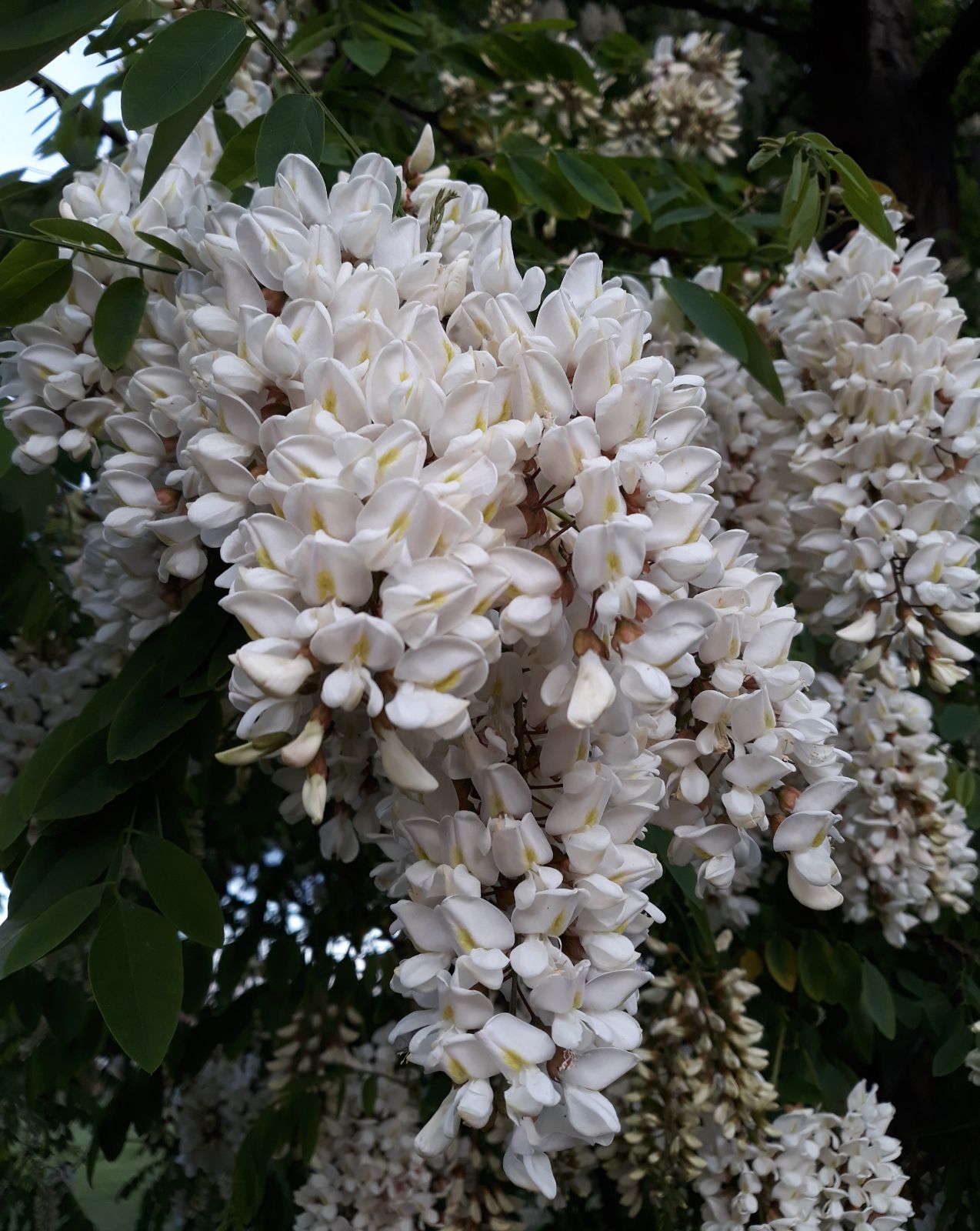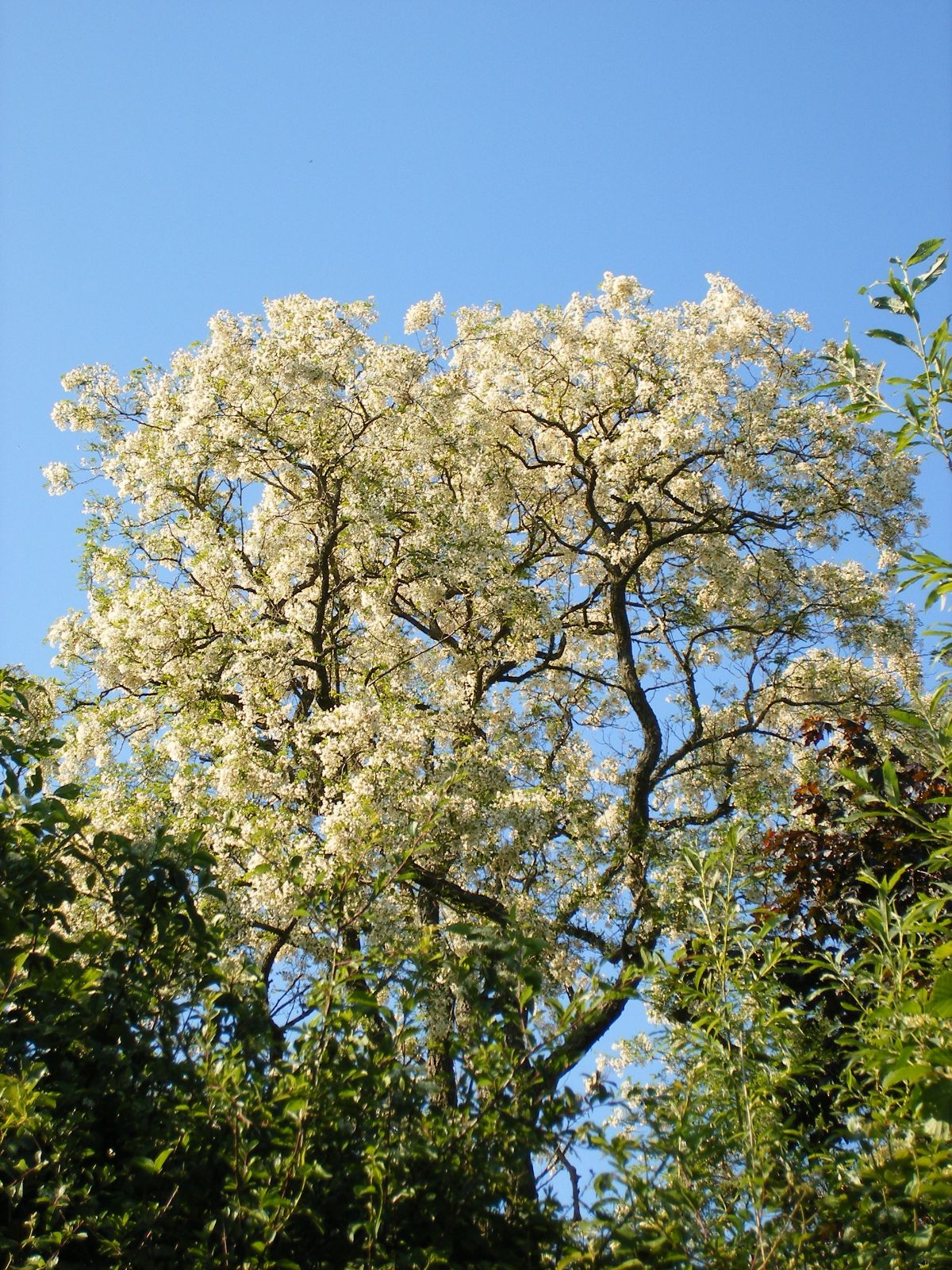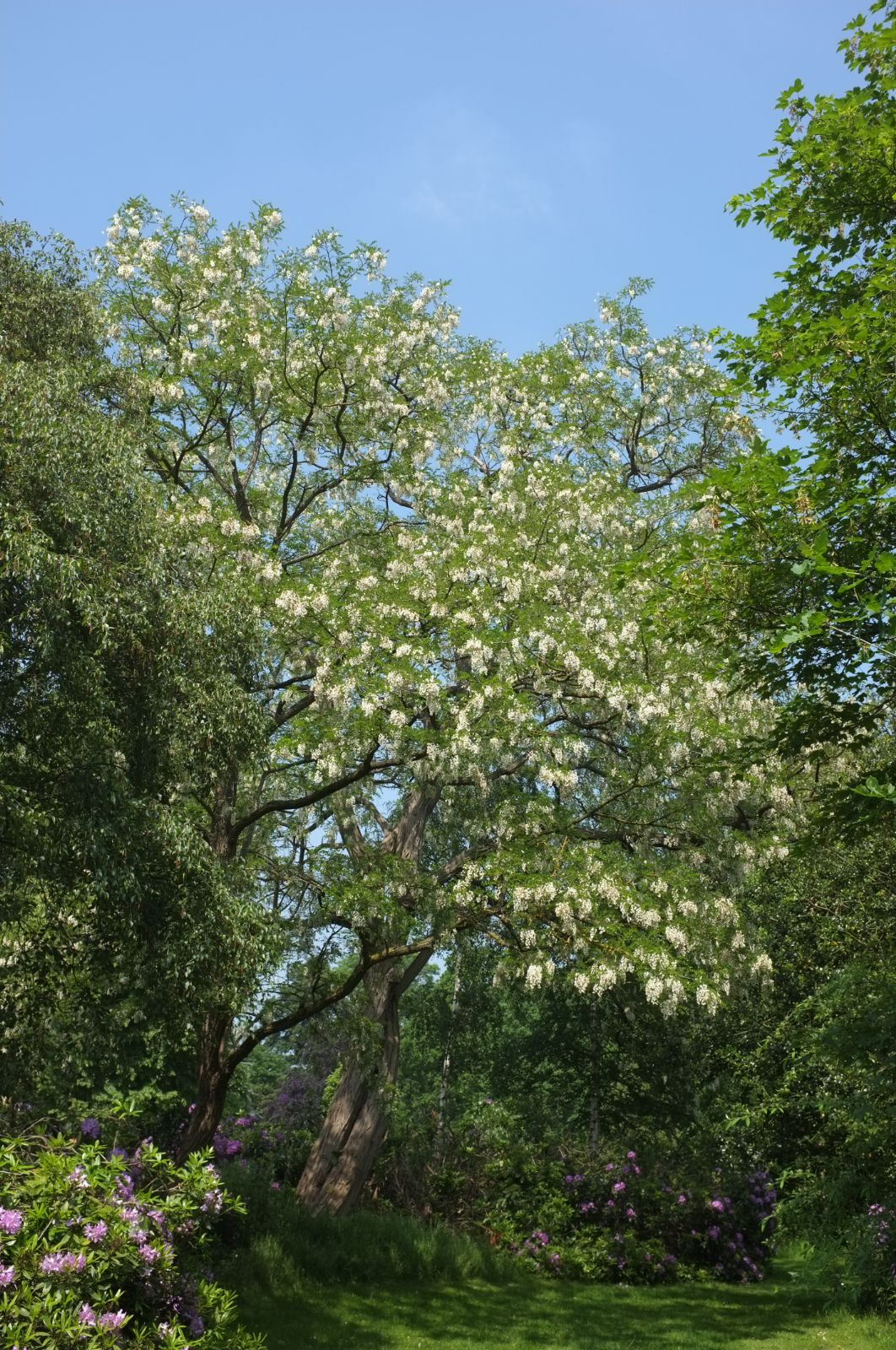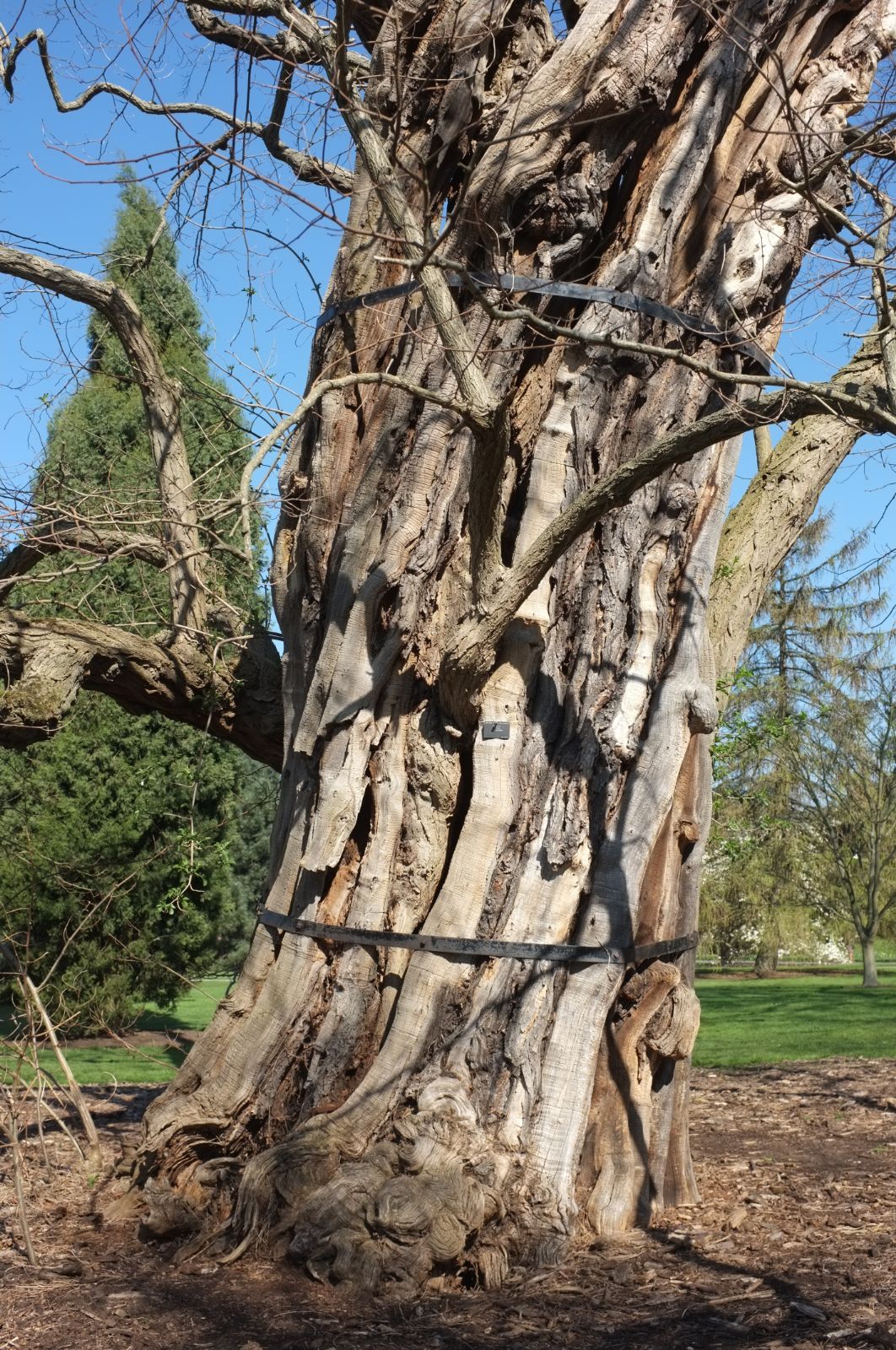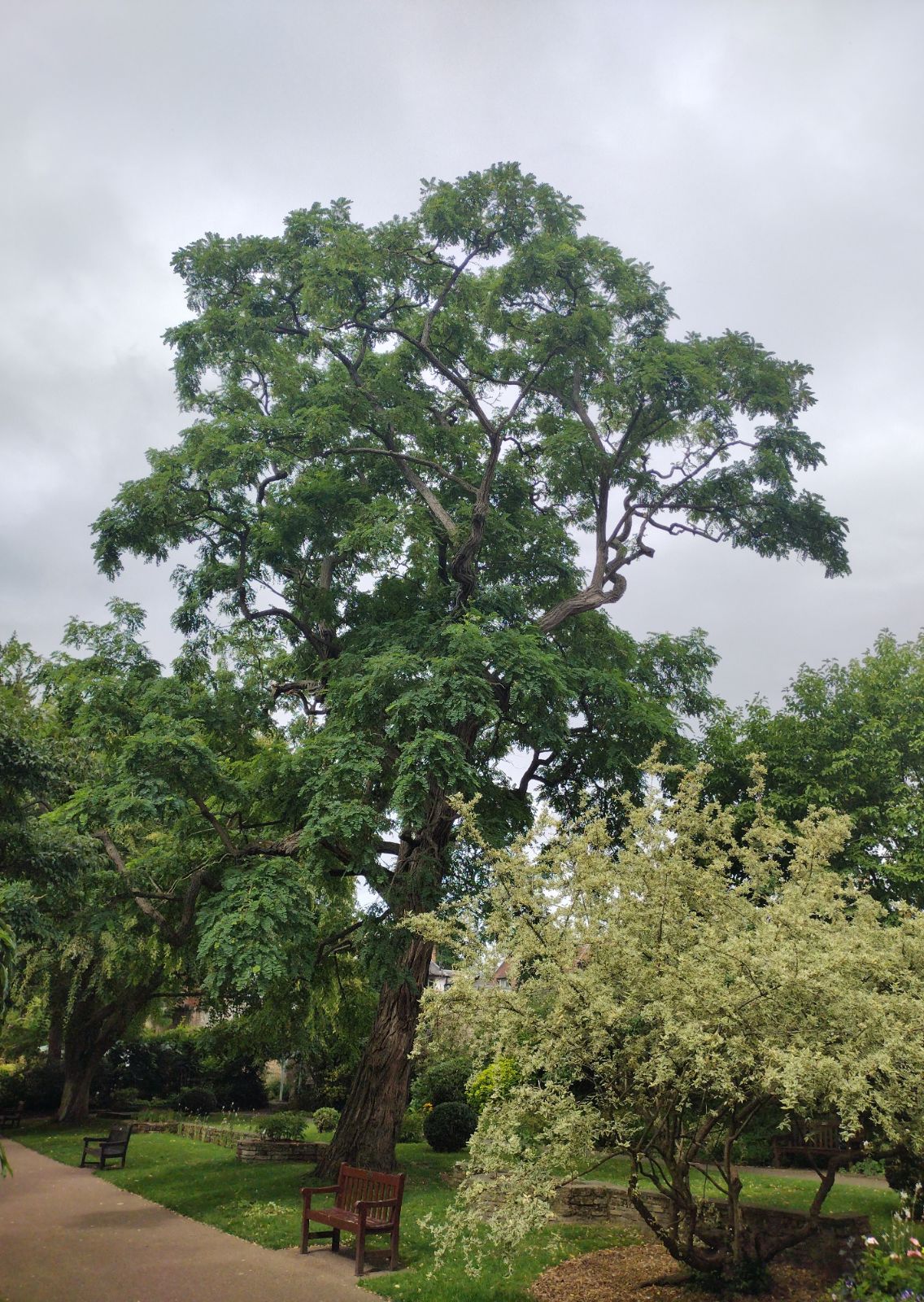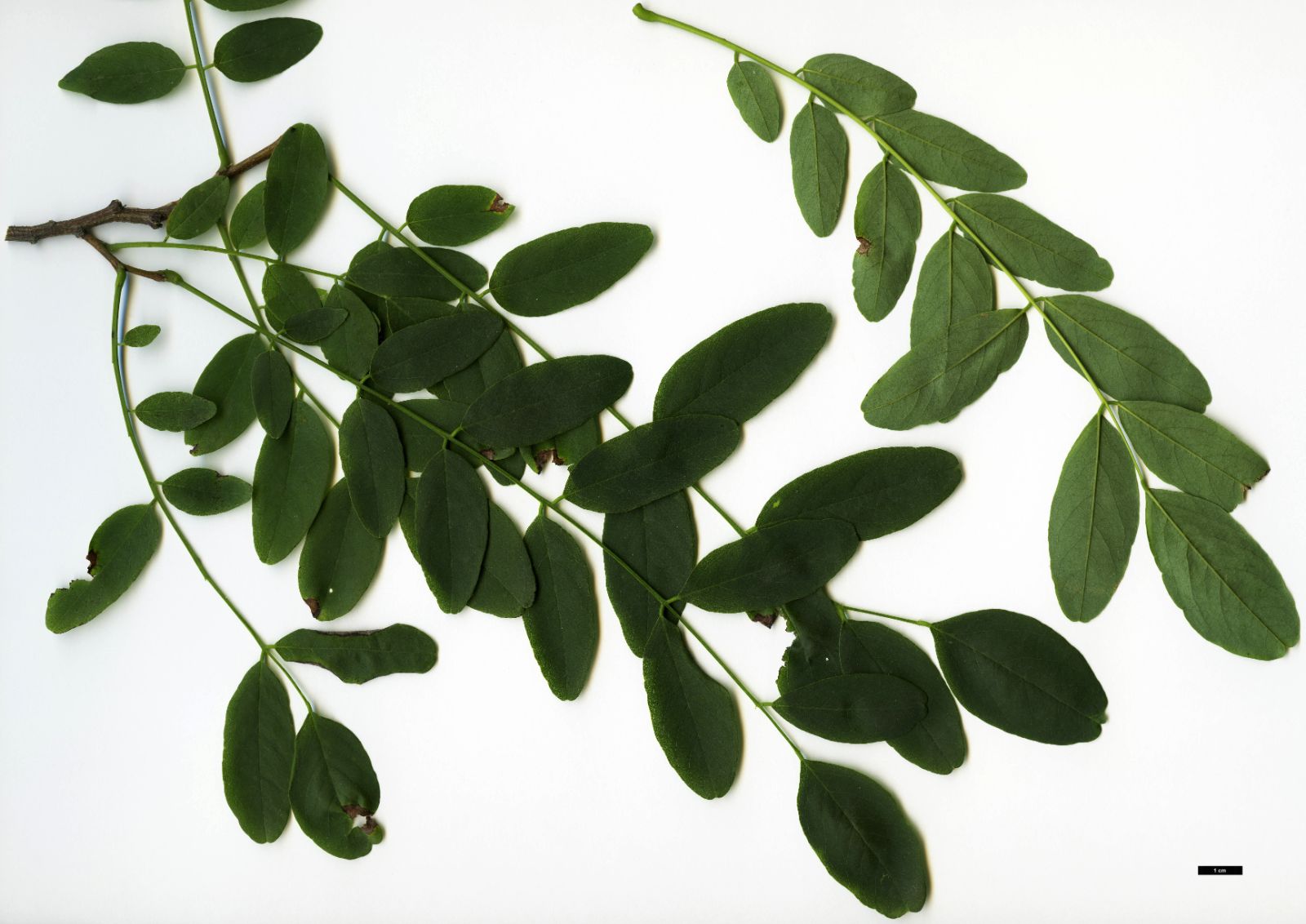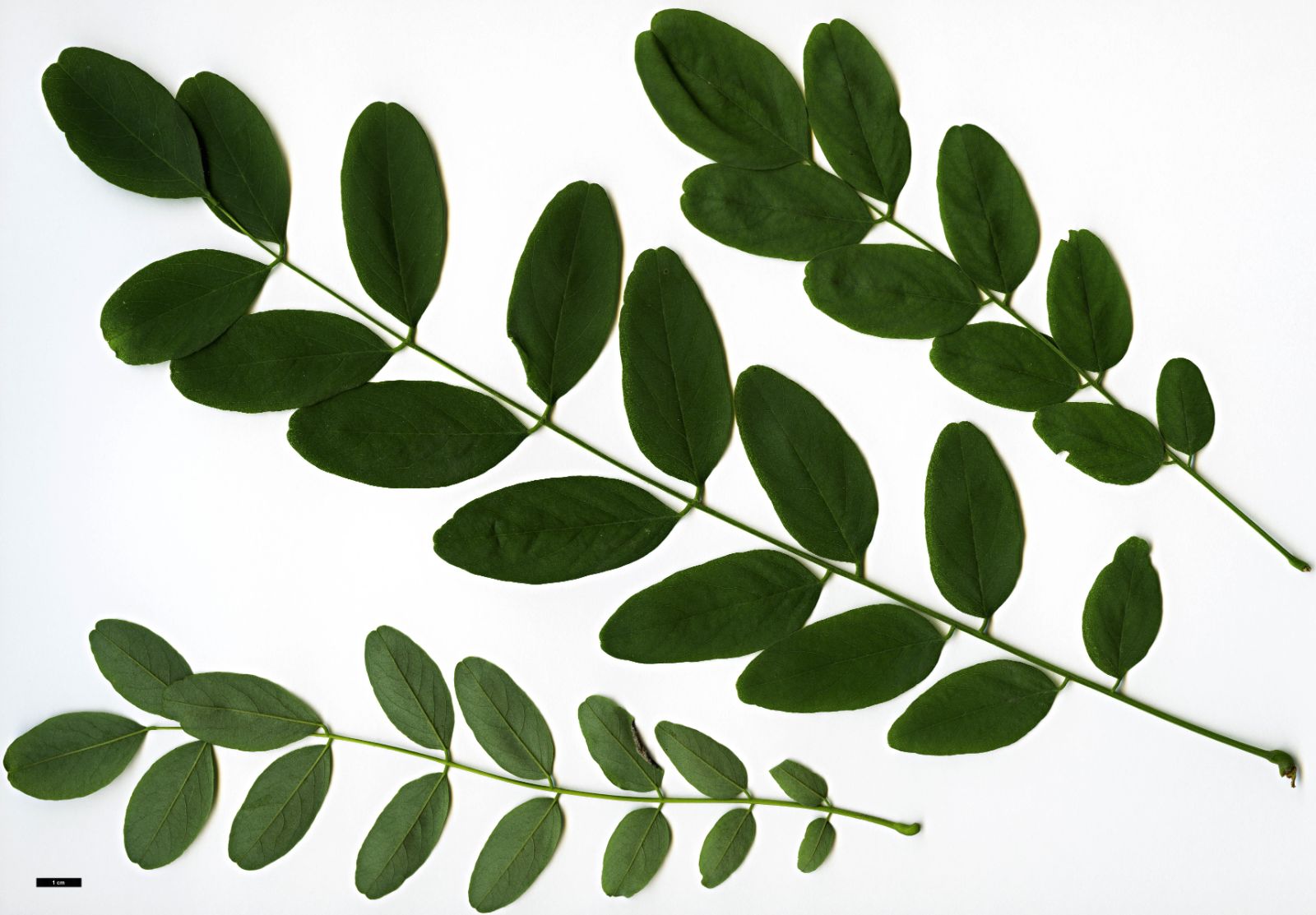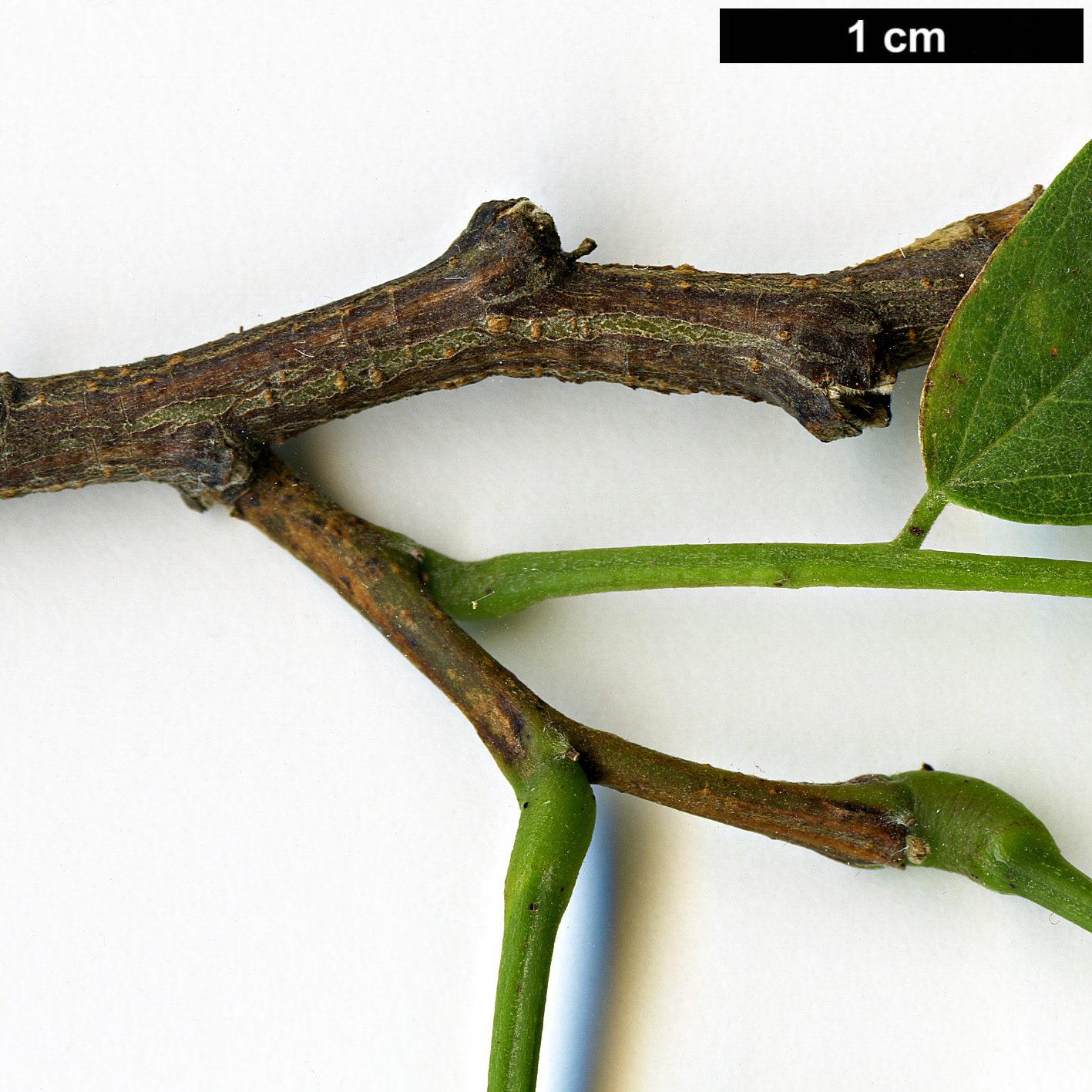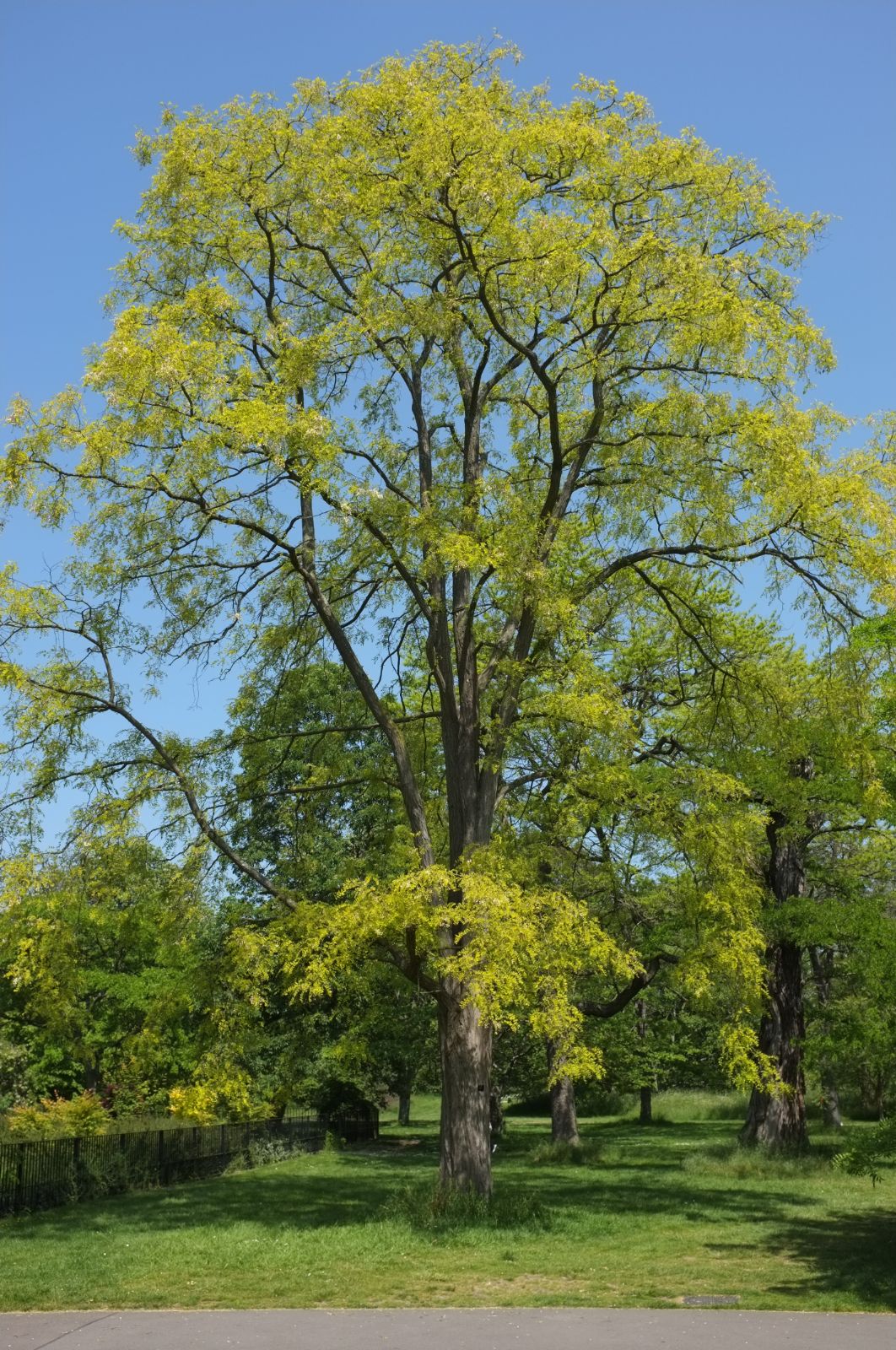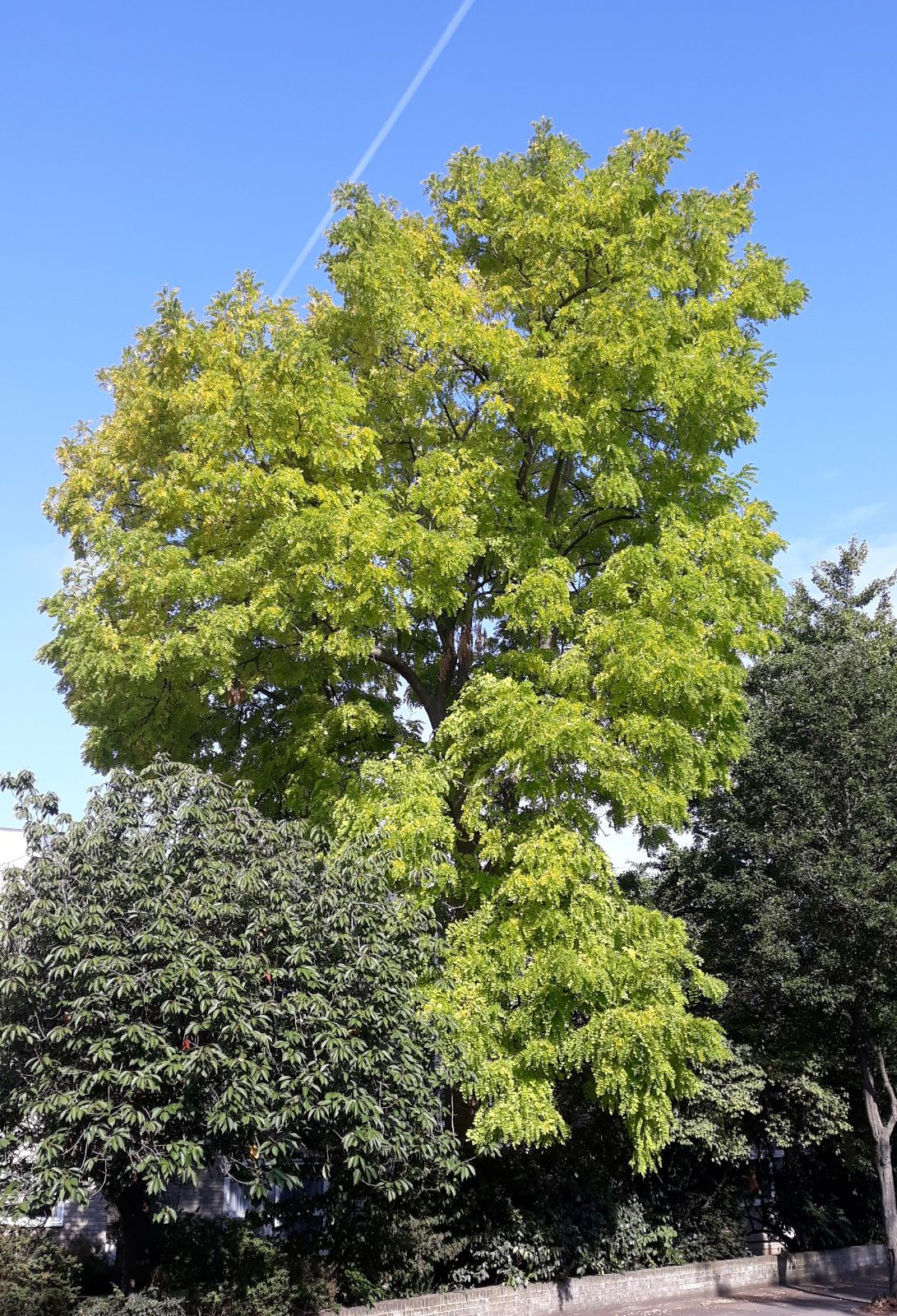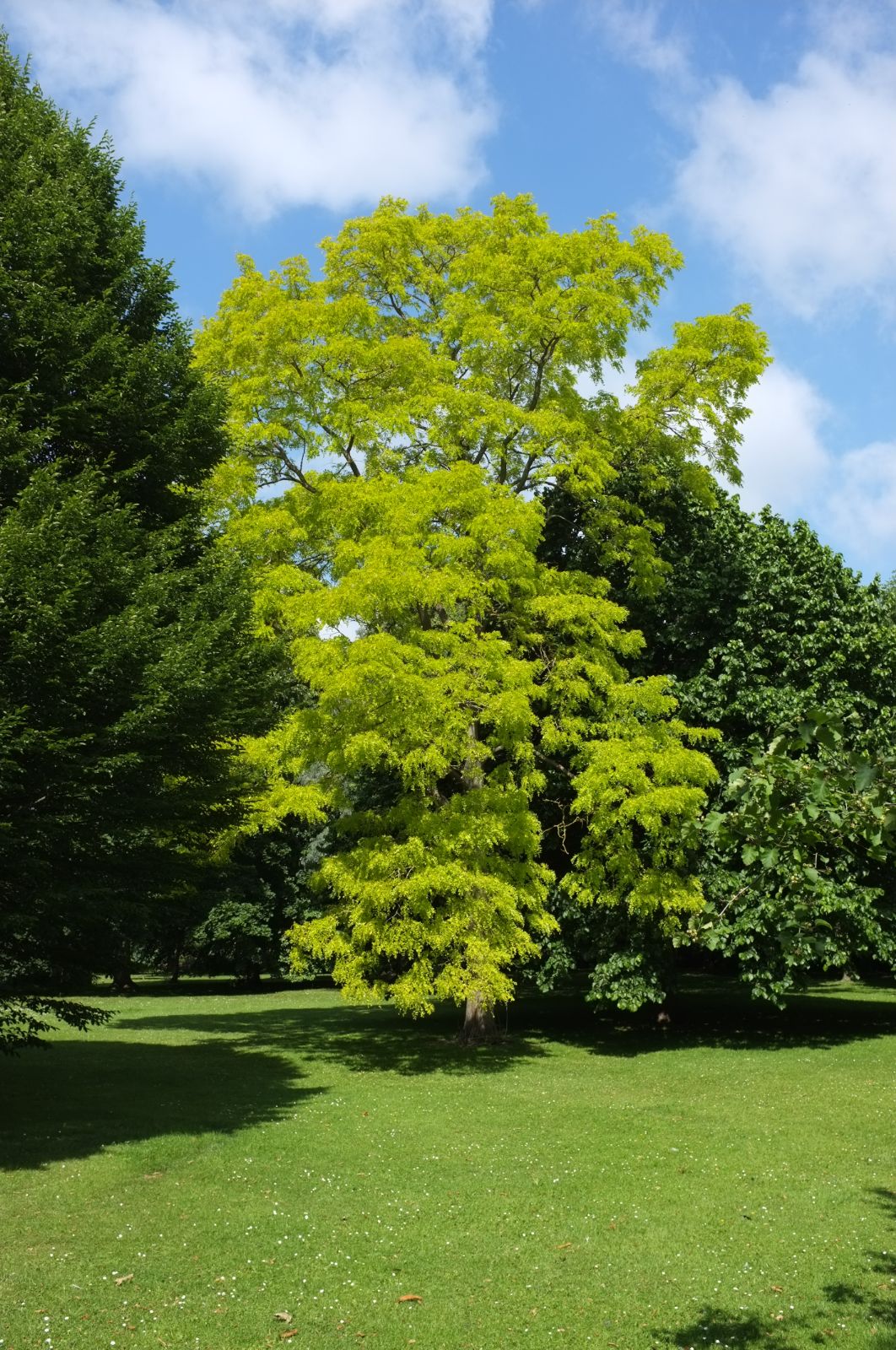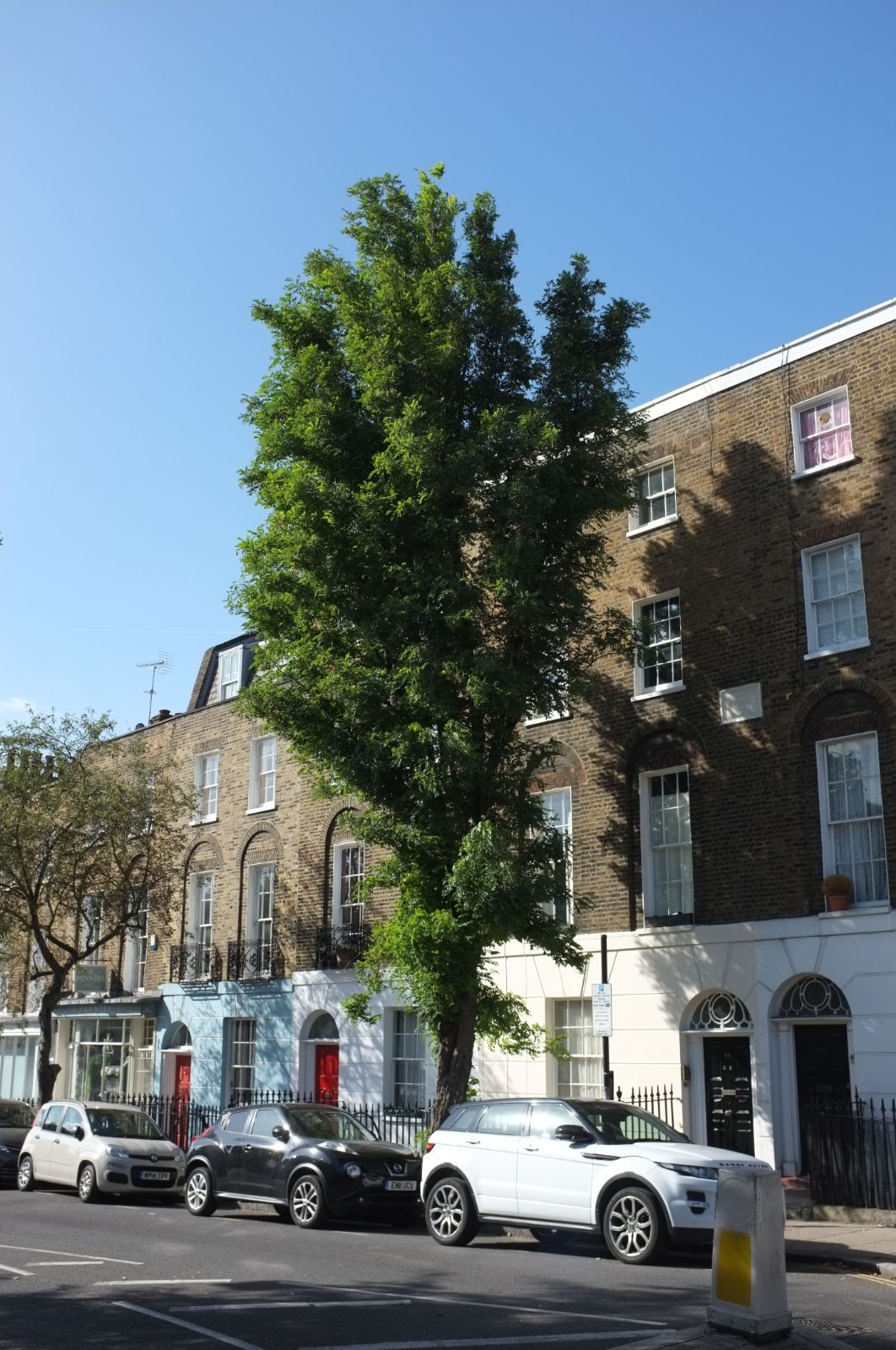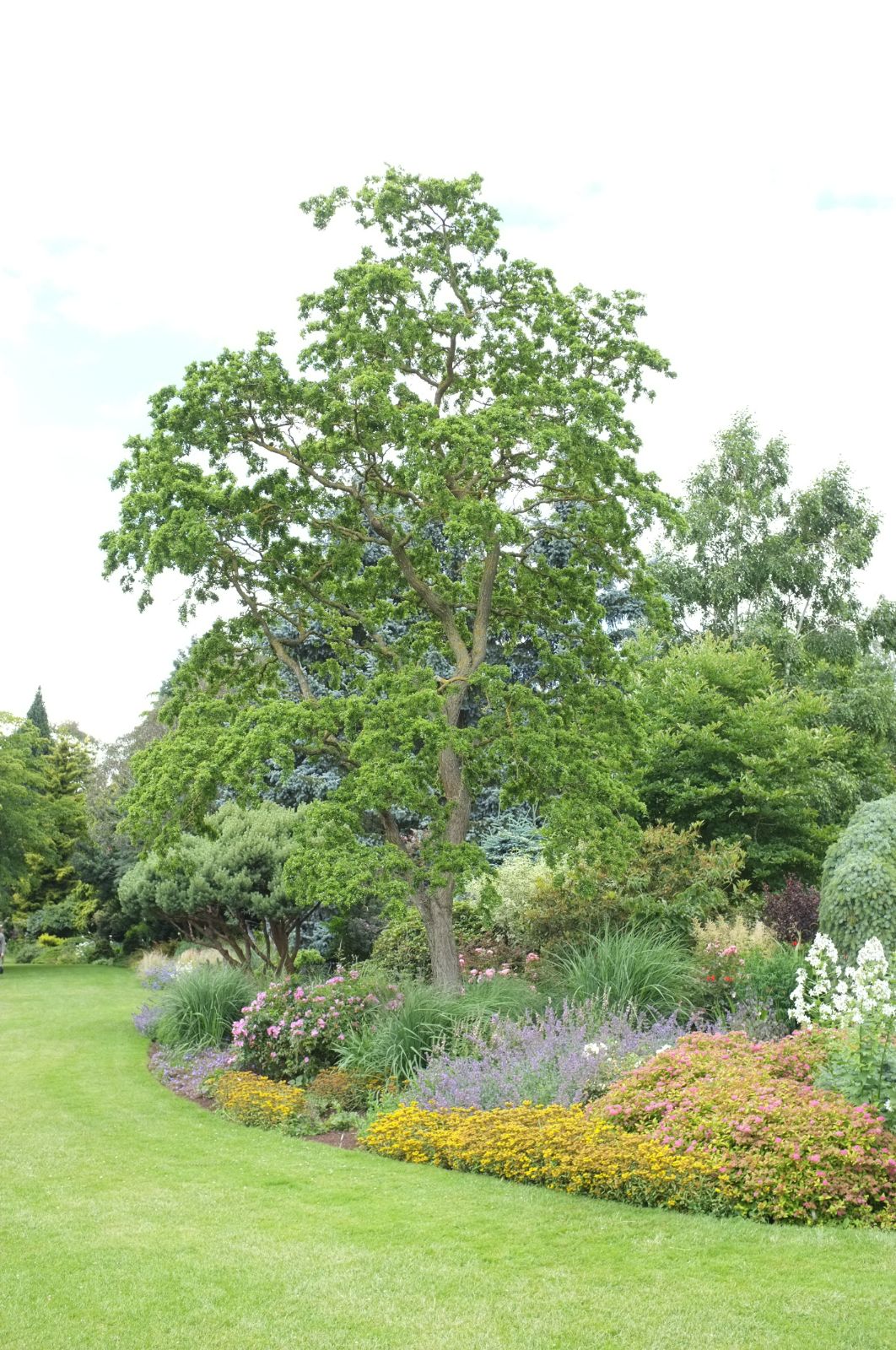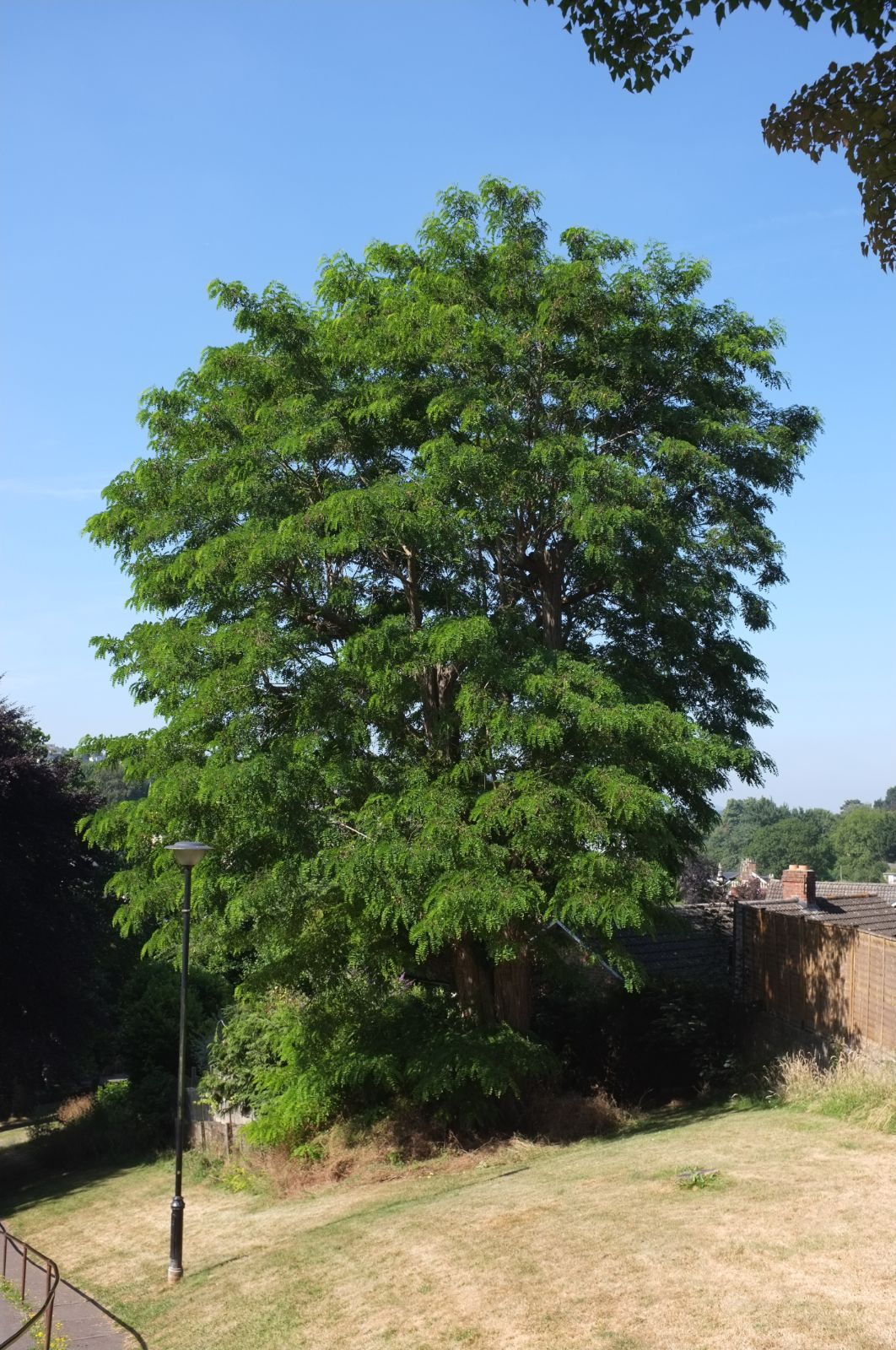Robinia pseudacacia
Credits
Article from Bean's Trees and Shrubs Hardy in the British Isles
Recommended citation
'Robinia pseudacacia' from the website Trees and Shrubs Online (treesandshrubsonline.
Genus
Common Names
- Locust
- False Acacia
Infraspecifics
A deciduous tree 70 to 80 ft high, with a large, rounded head of branches, and a trunk 2 to 4 ft in diameter, covered with a rugged, deeply furrowed bark. Leaves pinnate, 6 to 12 in. long, leaflets in five to eleven pairs, oval or ovate, 1 to 2 in. (sometimes 21⁄2) in. long in the typical form, covered with silvery hairs when quite young, eventually nearly glabrous. Stipules at first 1⁄2 in. long, downy, becoming stout, persistent spines 1 in. long; most conspicuous on young trees and suckers. Racemes 3 to 7 in. long, 11⁄2 to 2 in. wide, pendulous. Flowers 3⁄4 in. long, white, fragrant; each on a slender stalk, 1⁄3 in. long; standard petal blotched with yellow at the base; calyx 1⁄3 in. long, downy. Pods 21⁄2 to 31⁄2 in. long, 1⁄2 in. wide, upper seam winged, lower one thickened, containing four to ten seeds, glabrous.
Although now widely planted and naturalised in N. America, this species is native there only in the Appalachians from Pennsylvania southward, with a westward extension into Kentucky and Missouri and a secondary area west of the Mississippi in the Ozarks; it was in cultivation both in France and England by the 1630s. As an ornamental tree the robinia has much to recommend it. Its graceful feathery foliage is singularly effective in healthy trees, and when the tree is loaded with its white racemes in June the contrast of white and green is very effective. It grows with great rapidity when young, and its branches are apt to be broken off by wind in consequence. A judicious shortening back of the shoots in winter is helpful in inducing a sturdier growth. When old, the tree is apt to lose its large branches by their splitting off from the main trunk, or if the tree has been allowed to fork, nearly half of it may be lost at a time. The best way to prevent this is to keep the tree to a single leader until it is at least 25 ft high, so that one strong straight trunk is formed, and no branch allowed to develop sufficiently to rival it. But see ‘Appalachia’ and ‘Bessoniana’, neither of which should need this treatment. It is propagated by seeds or by the suckers the roots produce so plentifully, especially after the parent tree is felled.
Perhaps no American tree has made itself so thoroughly at home in Europe as this. The railway cuttings south of Paris are in places completely overrun with it, and I have noticed it thoroughly established in the Rhone Valley above Geneva, and on the hillsides between Trieste and the Castello di Miramare.
The locust produces a timber valuable on account of its peculiar quality of resisting decay in contact with the soil. On this account it is highly valued for making gate-posts and similar articles. Owing to the representations of William Cobbett, the famous Radical, who about 1825 to 1828 extolled the tree and its uses in his own peculiarly vigorous fashion, quite a mania for the tree was established. He himself set up as a dealer in seeds and plants, and to such purpose had he written up the tree and its virtues that he was, for a time, unable to meet the demand, although it is recorded that he imported seeds from America in tons. It did not prove a success as a forest tree, and is now rarely planted except for ornament. But every few years a controversy is started as to its value as a timber tree in Britain. There is no doubt about the value of the timber for certain minor purposes – it was once, and may be now, largely used for pins (treenails) to fasten timbers together in shipbuilding – but it is not produced in sufficient bulk, nor is it of a quality to render it of great value for constructive purposes.
Being so subject to wind-breakage, this species rarely makes a large specimen both in height and girth. Some of the largest recorded are: Frogmore, Berks, 75 × 163⁄4 ft (1964); Clare Court, Crondall, Hants, 50 × 153⁄4 ft (1973); Hampton Park, Seale, Surrey, 80 × 201⁄2 ft (1969); Bayfordbury, Herts, 92 × 101⁄2 ft, 25 ft bole (1973). The ancient tree at Kew, near the Main Gate, was planted in about 1762; it is 143⁄4 ft in girth.
An extraordinary number of seminal varieties of the locust have been raised in Europe. Between three and four dozen of them are cultivated at Kew, but many are not sufficiently distinct to require mention here. The following may be regarded as the most important:
From the Supplement (Vol. V)
The spelling ‘pseudacacia’ for the noun-epithet was used in all editions of this work, as in the old Kew Hand-lists and more recently in Flora Europaea. This derives from the spelling ‘pseud-acacia’ used by Linnaeus in the second edition of Species Plantarum and so presumably the one that he preferred. The spelling ‘pseudoacacia’ derives from the first edition of that work and is the one that should be used.
specimens: Chilham Castle, Kent, 66 × 91⁄2 ft (1983); Canterbury Cathedral, 56 × 93⁄4 ft (1984); Hampton Park, Seale, Surrey, 85 × 221⁄4 ft, forking (1984); Hollywell Hall, Lines., 40 × 111⁄2 ft (1983), Butleigh Court, Somerset, 82 × 10 ft (1984).
The ancient tree at Kew, planted about 1762, is 153⁄4 ft in girth (1985).
cv. ‘Frisia’. – specimens: Kew, pl. 1961, 44 × 23⁄4 ft (1980); Chelsea Physic Garden, London, 36 × 2 ft (1978); R.H.S. Garden, Wisley, Surrey, 49 × 2 ft (1985); Bath Botanic Garden, 50 × 31⁄4 ft (1984).
cv. ‘Pyramidalis’ (‘Fastigiata’). – specimens: Kew, in Robinia Collection, 56 × 21⁄2 ft and 56 × 71⁄4 ft at 2 ft (1981), Kew Palace, 60 × 41⁄4 ft (1976); Talbot Manor, Norfolk,) pl. 1956, 40 × 11⁄2 ft (1978); Spetchley Park, Worcs., 53 × 21⁄2 ft (1986).
cv. ‘Rozynskiana’. – specimens: Nymans, Sussex, Arboretum, 80 × 6 ft (1985); Hillier Arboretum, Ampfield, Hants, 43 × 31⁄2 ft at 3 ft (1986); Knightshayes, Devon, 30 × 21⁄4 ft (1984).
cv. ‘Semperflorens’.- specimens: Kew, pl. 1930, 50 × 31⁄4 ft (1981); Nymans, Sussex, Arboretum, 70 × 33⁄4 + 23⁄4 ft (1985); Talbot Manor, Norfolk,) pl. 1951, 52 × 31⁄4 ft (1978).
cv. ‘Tortuosa’. – specimens: Kew, 55 × 93⁄4 ft and 48 × 83⁄4 ft (1981); Edinburgh Botanic Garden, pl. 1903, 62 × 6 ft (1985).
cv. ‘Umbraculifera’ (‘Inermis’). – specimens: Kew, pl. 1897, 35 × 61⁄4 ft (1981); River Gardens, Twickenham, 20 × 71⁄4 ft at 3 ft (1983).
cv. ‘Unifoliola’ (‘Monophylla’). – specimens: Kew, pl. 1889, 65 × 51⁄2 ft and 70 × 51⁄4 ft (1981); Hyde Park, London, near Nursery, three trees, one 65 × 6 ft (1981); Nymans, Sussex, Arboretum, 60 × 31⁄2 ft (1985).
The example of ‘Monophylla Fastigiata’ at Kew, pl. 1894, measures 56 × 81⁄4 ft (1981).
'Appalachia'
A tree of fairly broad, symmetrical habit, with a central stem running well up into the crown. It is a selection from the so-called Shipmast locust, a group of straight-stemmed clones cultivated near the seaboard in Massachusetts and on Long Island, New York (var. rectissima Raber). It is recommended as a street and landscape tree (Dendroflora, No. 8, pp. 51–2; Morris Arb. Bull., Vol. 11 (1960), pp. 67–70).'Aurea'
Leaves golden at first, becoming lime green. In cultivation 1864. This has attained 80 × 5{1/2} ft at Moor Park, Ludlow (1962). The example at Kew, by the Main Gate, is 46 × 5{1/4} ft (1968).
'Bessoniana'
A vigorous tree with an ovoid crown, a well-developed central stem, and almost unarmed branchlets. Shy-flowering, but a good street tree. Of continental origin, in cultivation in Britain by 1871.'Coluteoides'
A small tree, exceptionally free-flowering, with closely set leaflets less than 1 in. long. Described in 1857 in a French publication and later distributed by Späth’s nursery, Berlin. This robinia is not the same as the R. p. sophoraefolia of Loddiges’s nursery, as is stated in many works.'Decaisneana'
See under R. × ambigua, p. 31.'Frisia'
Leaves golden yellow throughout the summer; thorns on the young growths red. This striking robinia was found by W. Jansen around 1935 in a former nursery at Zwollerkerspel, Holland. A.M. 1964.
'Pyramidalis' ('Fastigiata')
A tree of narrow habit, resembling in form the Lombardy poplar; branchlets almost unarmed; flowers sparsely borne. It was put into commerce by Leroy of Angers, before 1843. It is not in the first rank of columnar trees, but might be of some use in dry soils, or where there is much reflected heat from paving or neighbouring buildings. The trees at Kew are 50 to 60 ft high, and a younger example in the R.H.S. Garden, Wisley, is as tall (1965–75).
'Rehderi'
Resembling ‘Umbraculifera’ but more erect and less desirable. It was raised from seed at the Muskau Arboretum in 1859, and is named after the Director, who was the grandfather of Prof. Alfred Rehder of the Arnold Arboretum.
'Rozynskiana'
Leaves long, pendulous, with narrow, distant leaflets. Of open habit, with spreading branches. Put into commerce by Späth in 1903.
'Semperflorens'
A large and vigorous tree which produces its flowers in two flushes, the first in June, the second around September, or sometimes flowers more or less continuously from midsummer onwards. It arose as a seedling in a French nursery and was put into commerce in 1874.'Tortuosa'
Branches curiously twisted. Racemes small and thinly set with bloom. Known since early in the 19th century. Having many strong ascending limbs it is very subject to damage by wind. A tree at Kew, with a broken crown, measures 55 × 9 ft (1968).

